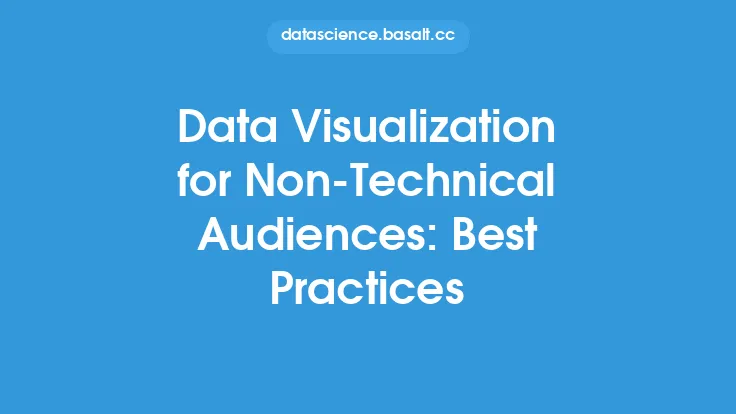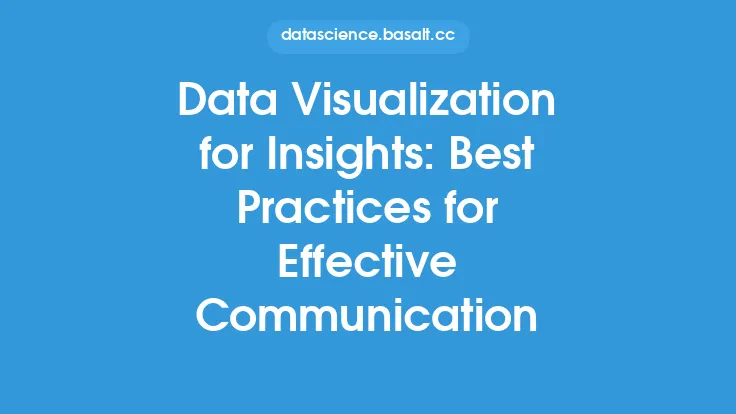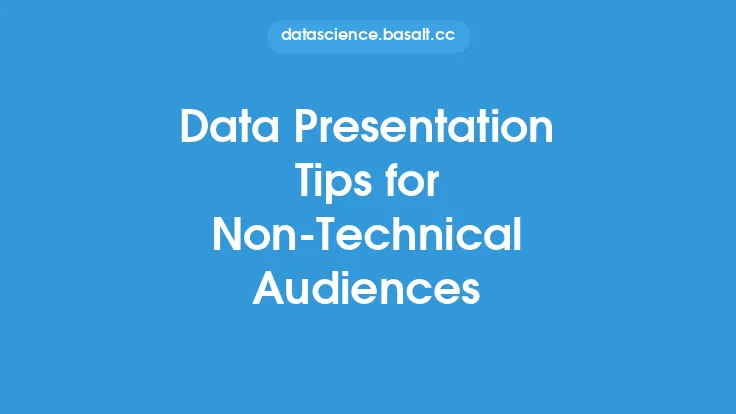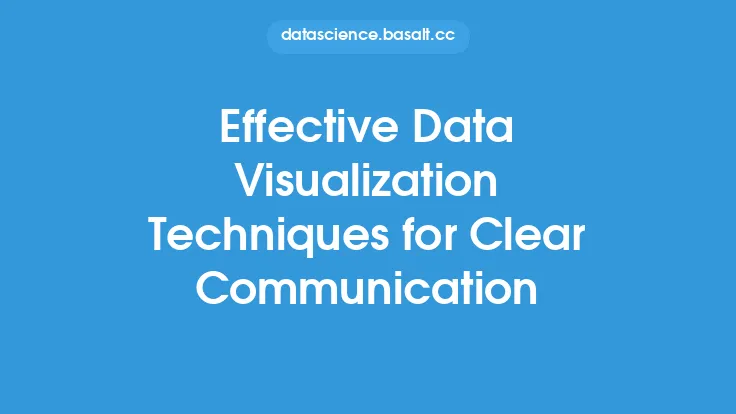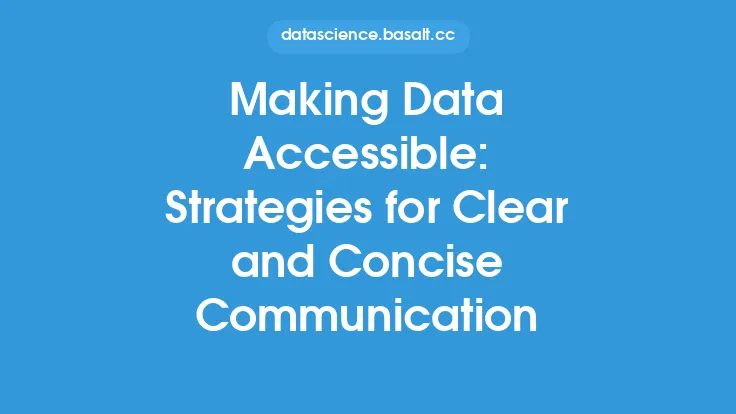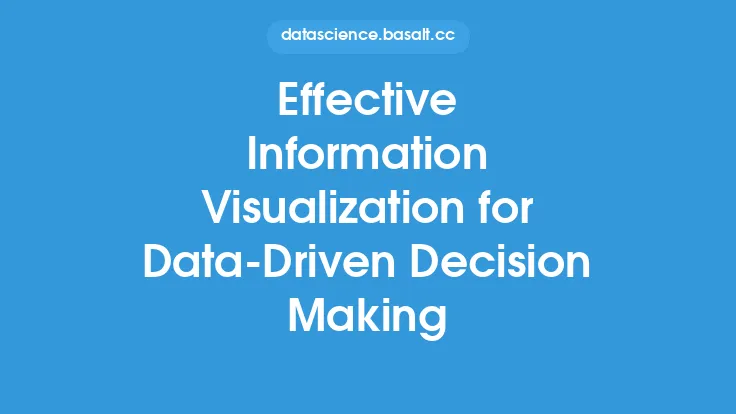When communicating data insights to non-technical audiences, it's essential to strike a balance between conveying complex information and avoiding technical jargon. Data visualization is a powerful tool for achieving this balance, as it allows presenters to distill intricate data into intuitive, easy-to-understand graphics. However, creating effective data visualizations for non-technical audiences requires a thoughtful approach, taking into account the audience's level of familiarity with data analysis and the story that needs to be told.
Understanding the Audience
To create effective data visualizations for non-technical audiences, it's crucial to understand who the audience is and what they hope to gain from the presentation. Non-technical audiences may include business stakeholders, policy makers, or the general public, each with their own set of concerns and level of data literacy. By understanding the audience's needs and expectations, presenters can tailor their visualizations to address specific questions or concerns, increasing the likelihood of effective communication. This involves considering factors such as the audience's prior knowledge of the subject matter, their level of comfort with data analysis, and the key insights that need to be conveyed.
Choosing the Right Visualization Type
The type of visualization used can significantly impact how well the message is conveyed to non-technical audiences. Different types of visualizations are suited for different types of data and stories. For example, bar charts and line graphs are often used for comparing categories or showing trends over time, while scatter plots and heat maps can be used to illustrate relationships between variables. When selecting a visualization type, consider what will be most intuitive for the audience. Simplicity is key; complex visualizations with too many variables or intricate details can confuse rather than enlighten. It's also important to ensure that the visualization is well-labeled and annotated, with clear titles, axis labels, and legends that facilitate understanding.
Simplifying Complex Data
One of the primary challenges in creating data visualizations for non-technical audiences is simplifying complex data without losing its essence. This involves identifying the most critical insights and focusing the visualization on those aspects. Techniques such as data aggregation, filtering, and grouping can help reduce the complexity of the data, making it more manageable and easier to visualize. Additionally, using summary statistics or key performance indicators (KPIs) can provide a concise overview of the data, highlighting trends and patterns that might be obscured by detailed, granular data.
Interactivity and Engagement
Interactive visualizations can be particularly effective for non-technical audiences, as they allow viewers to explore the data in a more engaging and intuitive way. Tools like dashboards, sliders, and hover-over text can enable users to drill down into specific aspects of the data, examining details that interest them most. However, interactivity should be used judiciously; too many interactive elements can overwhelm the user, detracting from the core message. The goal is to facilitate exploration and understanding, not to create a complex, technically demanding experience.
Storytelling with Data
While the article on storytelling in data visualization delves deeper into this topic, it's worth noting here that storytelling is a critical component of effective data communication, especially for non-technical audiences. By framing the data within a narrative context, presenters can make the insights more relatable and memorable. This involves setting up a problem or question, providing evidence through data visualization, and then drawing conclusions based on that evidence. The narrative should be clear, concise, and focused on the key findings, avoiding technical jargon and complex statistical concepts that might alienate the audience.
Best Practices for Design
The design of the visualization plays a significant role in its effectiveness. Principles such as clarity, consistency, and aesthetics should guide the design process. This includes selecting appropriate colors, fonts, and layouts that enhance readability and comprehension. While the neighboring articles delve into specifics such as color usage, typography, and accessibility, the overarching principle for non-technical audiences is to prioritize simplicity and clarity. Avoid clutter, ensure sufficient contrast between elements, and use visual hierarchy to draw attention to the most important insights.
Evaluating Effectiveness
Finally, evaluating the effectiveness of data visualizations for non-technical audiences is crucial for refining and improving communication strategies. This can involve feedback sessions, usability testing, or even simple surveys to gauge understanding and engagement. By assessing how well the visualizations convey the intended message and identifying areas for improvement, presenters can refine their approach, ensuring that future communications are more effective. This iterative process of design, feedback, and refinement is key to developing data visualizations that resonate with non-technical audiences.
In conclusion, creating effective data visualizations for non-technical audiences requires a deep understanding of the audience, careful selection of visualization types, simplification of complex data, thoughtful use of interactivity, and a focus on storytelling and clear design principles. By following these strategies and continually evaluating and refining their approach, communicators can ensure that their data insights are conveyed clearly and persuasively, regardless of the audience's technical background.
